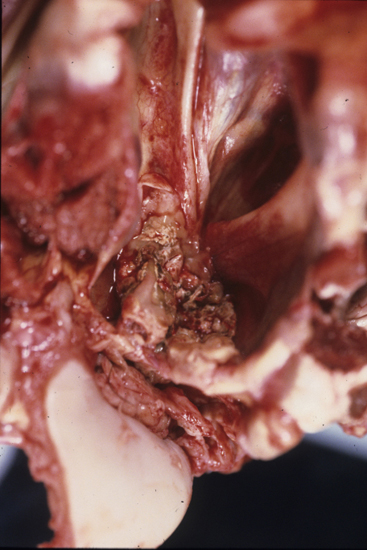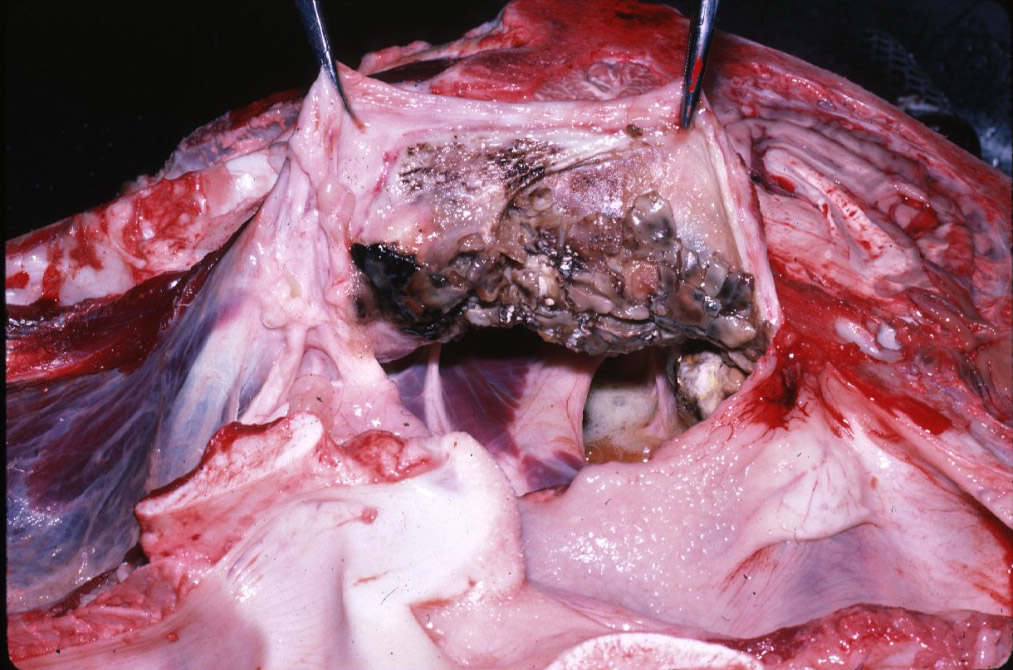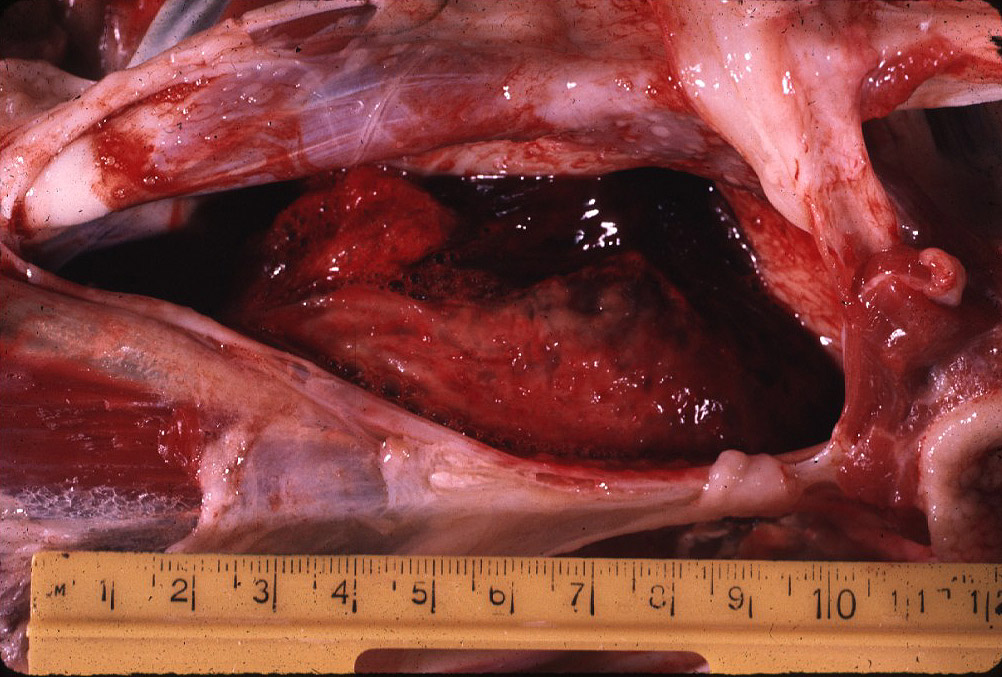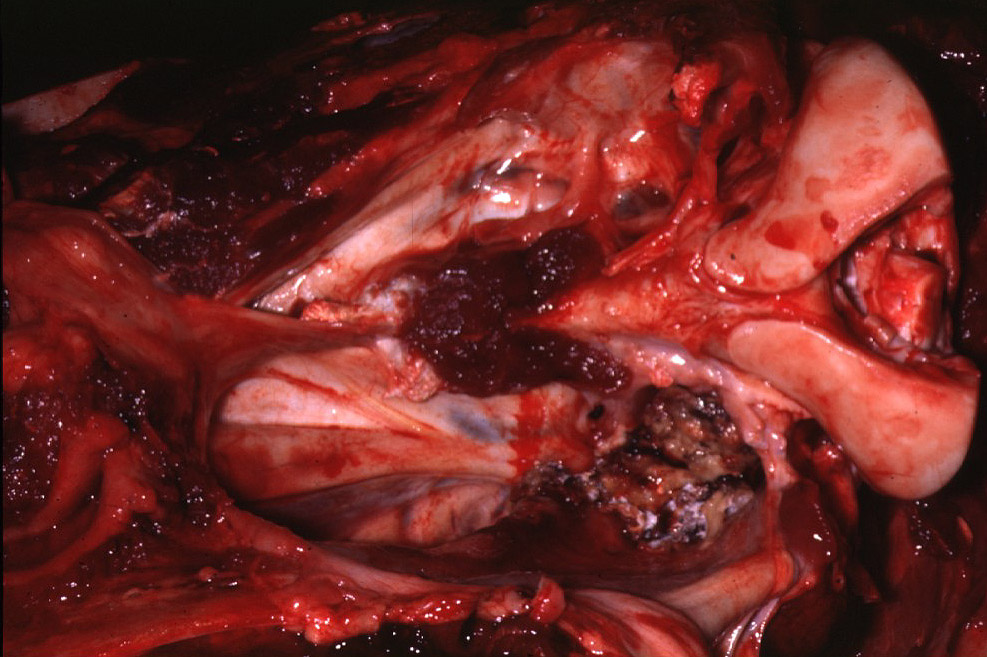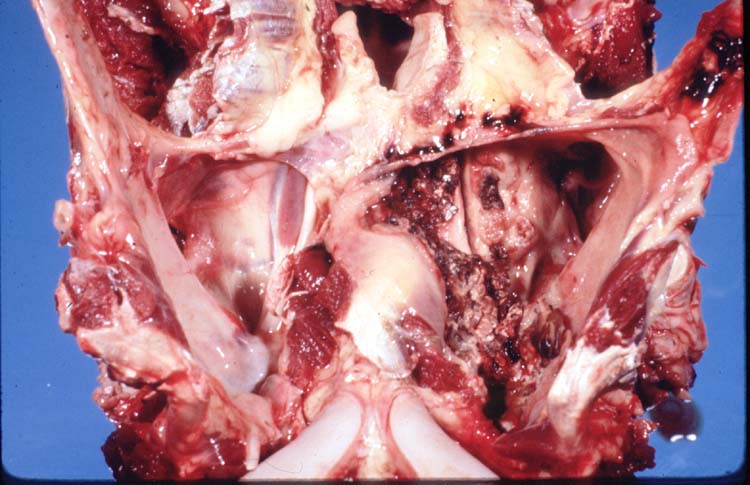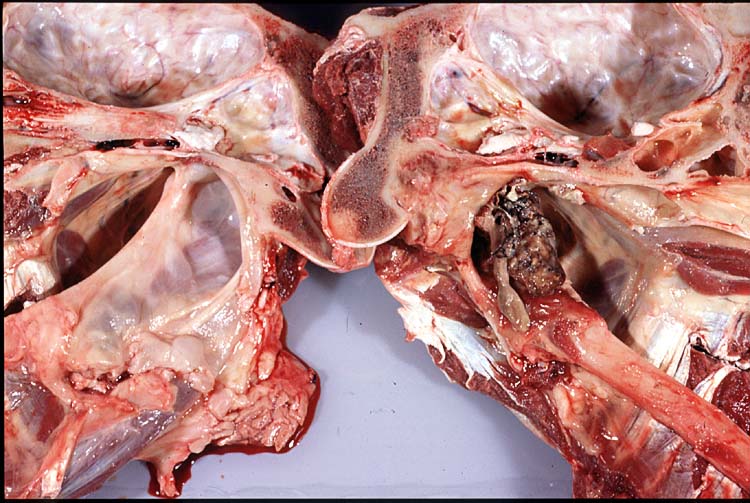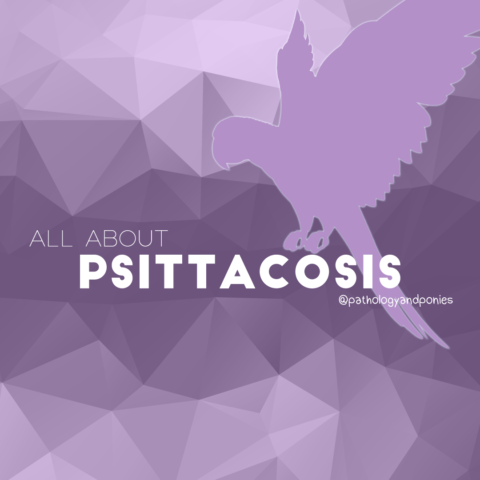Today’s path rounds are on 𝐠𝐮𝐭𝐭𝐮𝐫𝐚𝐥 𝐩𝐨𝐮𝐜𝐡 𝐦𝐲𝐜𝐨𝐬𝐢𝐬! This was a request ![]()
𝐖𝐡𝐚𝐭 𝐢𝐬 𝐢𝐭?
𝐆𝐮𝐭𝐭𝐮𝐫𝐚𝐥 𝐩𝐨𝐮𝐜𝐡 𝐦𝐲𝐜𝐨𝐬𝐢𝐬 is a fungal infection of the 𝐠𝐮𝐭𝐭𝐮𝐫𝐚𝐥 𝐩𝐨𝐮𝐜𝐡, which is a unique structure in equids. Basically, these pouches are an enlargement of the 𝐚𝐮𝐝𝐢𝐭𝐨𝐫𝐲 𝐭𝐮𝐛𝐞 (also known as the Eustachian tube in humans).
𝐖𝐡𝐨 𝐠𝐞𝐭𝐬 𝐢𝐭?
Equines, particularly horses, get this disease!
𝐖𝐡𝐚𝐭 𝐜𝐚𝐮𝐬𝐞𝐬 𝐢𝐭?
Guttural pouch mycosis is typically caused by 𝐀𝐬𝐩𝐞𝐫𝐠𝐢𝐥𝐥𝐮𝐬, which you might know as a common bread mold. Horses can acquire the fungus from their environment by inhaling the fungal spores or 𝐡𝐲𝐩𝐡𝐚𝐞 (long branching form of the fungus). This fungus then sets up shop in the guttural pouches, often attaching itself to the 𝐜𝐚𝐫𝐨𝐭𝐢𝐝 𝐚𝐫𝐭𝐞𝐫𝐢𝐞𝐬 (major arteries supplying the head) and 𝐜𝐫𝐚𝐧𝐢𝐚𝐥 𝐧𝐞𝐫𝐯𝐞𝐬 (major nerves supplying the head), as these structures run within the guttural pouch wall.
𝐖𝐡𝐲 𝐢𝐬 𝐭𝐡𝐢𝐬 𝐚 𝐩𝐫𝐨𝐛𝐥𝐞𝐦?
Fungi tend to cause 𝐧𝐞𝐜𝐫𝐨𝐬𝐢𝐬 of the tissue that they attach to, which can be very problematic if they are attached to the carotid arteries! The fungus will weaken the arterial wall, and eventually the artery may rupture causing a huge nosebleed. Enough blood can be lost in these nosebleeds to actually cause death in the affected horse.
If the fungus sets up shop on a nerve, they can damage the nerve in a similar fashion, and cause clinical signs. One of the most common signs is 𝐝𝐲𝐬𝐩𝐡𝐚𝐠𝐢𝐚 (difficulty eating), which typically has a poor prognosis.
𝐇𝐨𝐰 𝐢𝐬 𝐢𝐭 𝐝𝐢𝐚𝐠𝐧𝐨𝐬𝐞𝐝?
This disease is best diagnosed using an 𝐞𝐧𝐝𝐨𝐬𝐜𝐨𝐩𝐞, basically a camera on a long tube, that is introduced through the nose into the guttural pouch. Using this camera, the veterinarian can visualize the fungal plaques, and make the diagnosis.
𝐇𝐨𝐰 𝐢𝐬 𝐢𝐭 𝐭𝐫𝐞𝐚𝐭𝐞𝐝?
The best method of treatment is applying 𝐚𝐧𝐭𝐢𝐟𝐮𝐧𝐠𝐚𝐥 drugs directly onto the fungal plaques using the endoscope, as well as putting the horse on oral or injectable antifungal drugs. If the fungus is on the carotid artery wall, often veterinarians will recommend 𝐨𝐜𝐜𝐥𝐮𝐝𝐢𝐧𝐠 the carotid artery (tying it off to prevent blood flow) surgically, in order to prevent a fatal nosebleed going forward.
𝐏𝐡𝐨𝐭𝐨𝐬
1-2) Examples of fungal plaques in the guttural pouch.
3) An example of a guttural pouch filled with blood after a carotid artery rupture.
4-6) More examples of fungal plaques in the guttural pouch, with the unaffected guttural pouch present for comparison.
𝐒𝐨𝐮𝐫𝐜𝐞𝐬
Maxie, G. Jubb, Kennedy and Palmer’s Pathology of Domestic Animals, Volume 2. Sixth Edition.
Rush, BR. Guttural pouch disease in horses. Merck Veterinary Manual 2014.
Photos 1-6 © Noah’s Arkive contributors Knoll, Wright/Meuten, Nation, King licensed under CC BY-SA 4.0.

